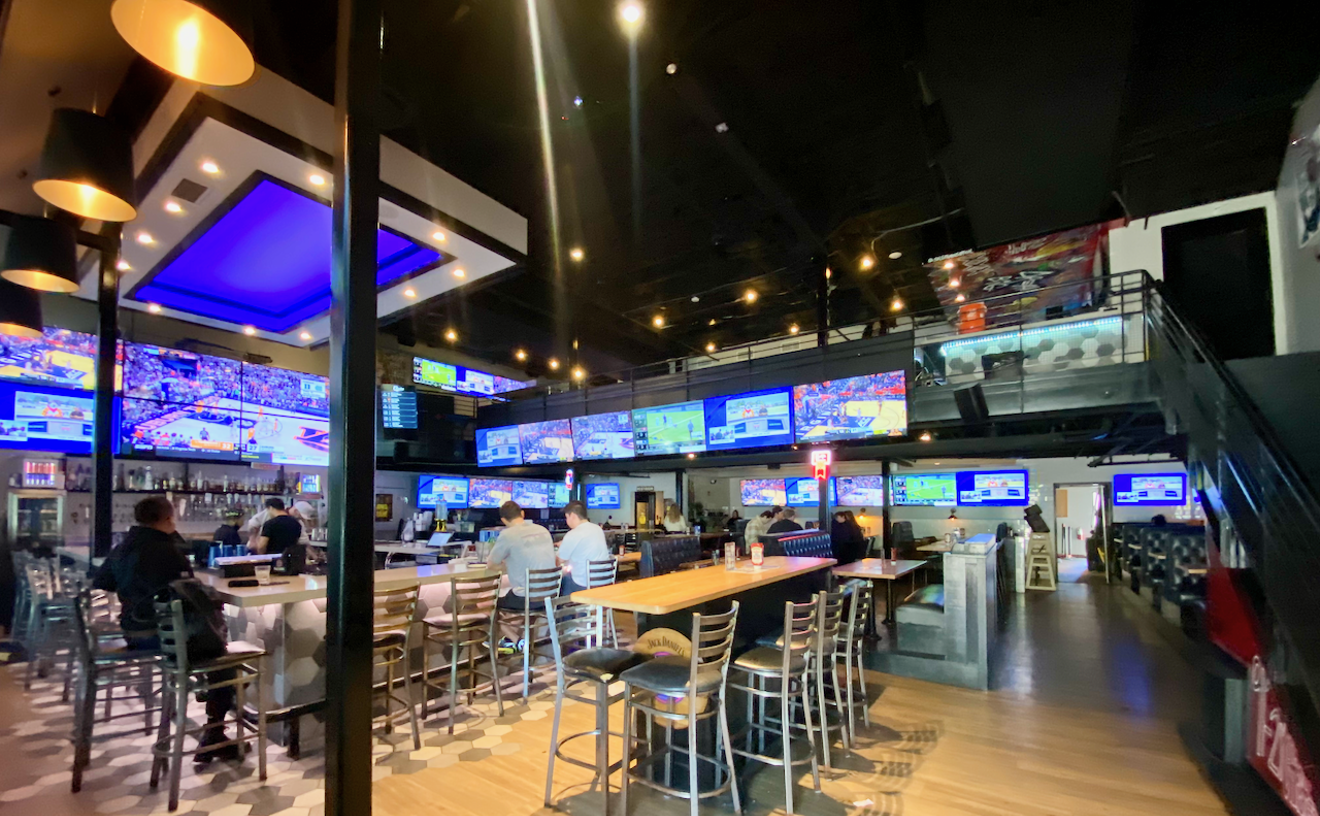Whether it's a 50-year tradition that leaves no choice in the matter, regional availability or a staunch preference for the specific taste derived from one wood or another, Dallas pitmasters have smoking-hot takes on which wood brings the wood in the great creosote debate.
A true post-oak disciple, Lockhart Smokehouse Plano pitmaster Will Fleishman says hickory's heavy smoke taste gets in the way of the actual protein.
"The object of the cooking process is to exalt the meat over trying to force smoke down people's throats," Fleishman says. "That's why it's part of our central Texas tradition to use exclusively post oak."
See also: Dallas' Five Best Barbecued Pork Ribs
On the other side of the aisle, hickory sticklers like Earnest Eckert of Bartley's Bar-B-Q in Grapevine counterpunch that an oak cook leaves something to be desired in the flavor department.
"In a beef situation, hickory is the better smoke," Eckert says. "The slower-burning wood helps me control temperature a little better, where with oak, the lighter smoke flavor gets lost somewhere before the plate gets to the customer."
Fort Worth staple Angelo's has been a strictly hickory establishment for its entire 57-year administration, and pitboss Jason George sees no reason to deviate from the sauce-centric recipe handed down to the third-generation meat sergeant.
"That's what Angelo started with in 1958," George says. "It ain't broke yet, so I'm not going to be the one to fix it."
We've got ourselves a smoke fight; just thank Baby Back Jesus the 'Plex has room in its collective belly for all offerings, provided they've been in a low fire overnight in the range of 200-230 degrees. Clearly the oaksters and the hickory sticks are drawing a line in the ashes between the softer smoke taste characteristic of a post oak cook, and the thicker smoke flavor that pervades every bite of a good hickory cook.
But it's not that simple. Enter the Independents. Some nuts prefer pecan, like Travis Mayes, pitmaster and owner of Garland's Meshack's Bar-B-Que Shack.
"Hickory gives me heartburn, and oak burns so hot and so fast, it dries your ribs," Mayes says. "I've always said hickory is the king, oak is the queen, but pecan is the choice of professionals. It smells good when it's cooking and gives me a milder smoke flavor with that pizzazz."
And then there are the mixologists. Most profitable pitmasters have conquered the multi-variate equation scrawled across the chalkboard that is a consistently good cook, so they're less than willing to experiment or combine woods once they've solved for '$'. George says that fruitwoods like apple and cherry, or boutique woods like flavored pecan, are mostly for home cue-ers, playing around and experimenting, still looking for a unique taste all their own. Fleishman's eyes roll out the side of his head when he hears competitors speak of exotic pairing and blending techniques.
"No one's palette can distinguish the subtlety of combining three different woods in a cook," Fleishman says. "Our motto is Wood, Fire, Meat and Beer, and it all starts with one wood."
But amalgamation is by no means abomination. Just ask Todd David, meat man at Cattleack BBQ, or David Longoria, owner of Everman's Longoria's BBQ. Todd David lines his smoker with post oak before sprinkling in some hickory branches, a peace offering in the North Texas wood wars. Longoria combines post oak with pecan in his cooks, a move he says brings a smoother smoke flavor than he would get using one or the other. Both extoll the virtue of not only a scrum-diddly-umptious end product, but one that wafts as well.
"We eat with all our senses," Cattleack's David says. "Our smoke not only gives us great rich flavor, we also want that perfect aroma flowing through the facility."
"I can't smell it on myself anymore," says Longoria, who has operated the family business since 2002. "But I go to the bank straight from work, and all the girls want to stand next to me. It's the best cologne in Texas."
It should be noted that the famous Pecan Lodge also uses a blend, but a blend of mesquite and oak. Most of the pitmasters interviewed here speak out against smoking with mesquite, noting that it burns faster and hotter than oak, making it more ideal for grilling than smoking. Mesquite is more prevalent in the West Texas barbecue scene than here at home. Maybe Justin Fourton knows something the rest don't.










